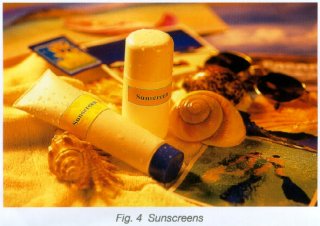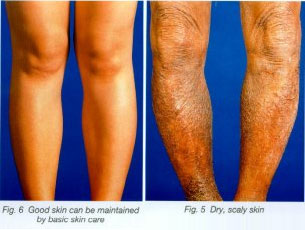
The sun is responsible for premature aging. It hastens wrinkling and tanning of your skin, as well as causes the appearance of blotchy brownish discoloration. It is the ultraviolet radiation in sunlight that is responsible for suntans, sunburns, premature aging (wrinkles and pigmentation) and some types of skin cancers.
It is important to avoid excessive sun exposure. The sun's rays are strongest between the hours of 10am to 3pm. Clothing also has some bearing on the effects of sun exposure. Cotton fabrics provide superior protection from sunlight and tightly woven fabrics afford better protection than loose weaves.
In addition to common sense approaches to sun avoidance, the routine use of sunscreen is an important part of basic skin maintenance. There are basically two types of sunscreens:-
i) physical sunscreens contain opaque, physical barriers such as titanium dioxide and zinc oxide which reflect the light energy,
ii) chemical sunscreens, which contain chemical ingredients to absorb the ultraviolet rays.
The SPF (Sun Protection Factor) tells you the degree of protection the sunscreen offers. Generally an SPF of 20 or more is advised.
As a guide most sunscreens should be applied at least twenty to thirty minutes before going out. You should re-apply after prolonged swimming or excessive perspiration.
